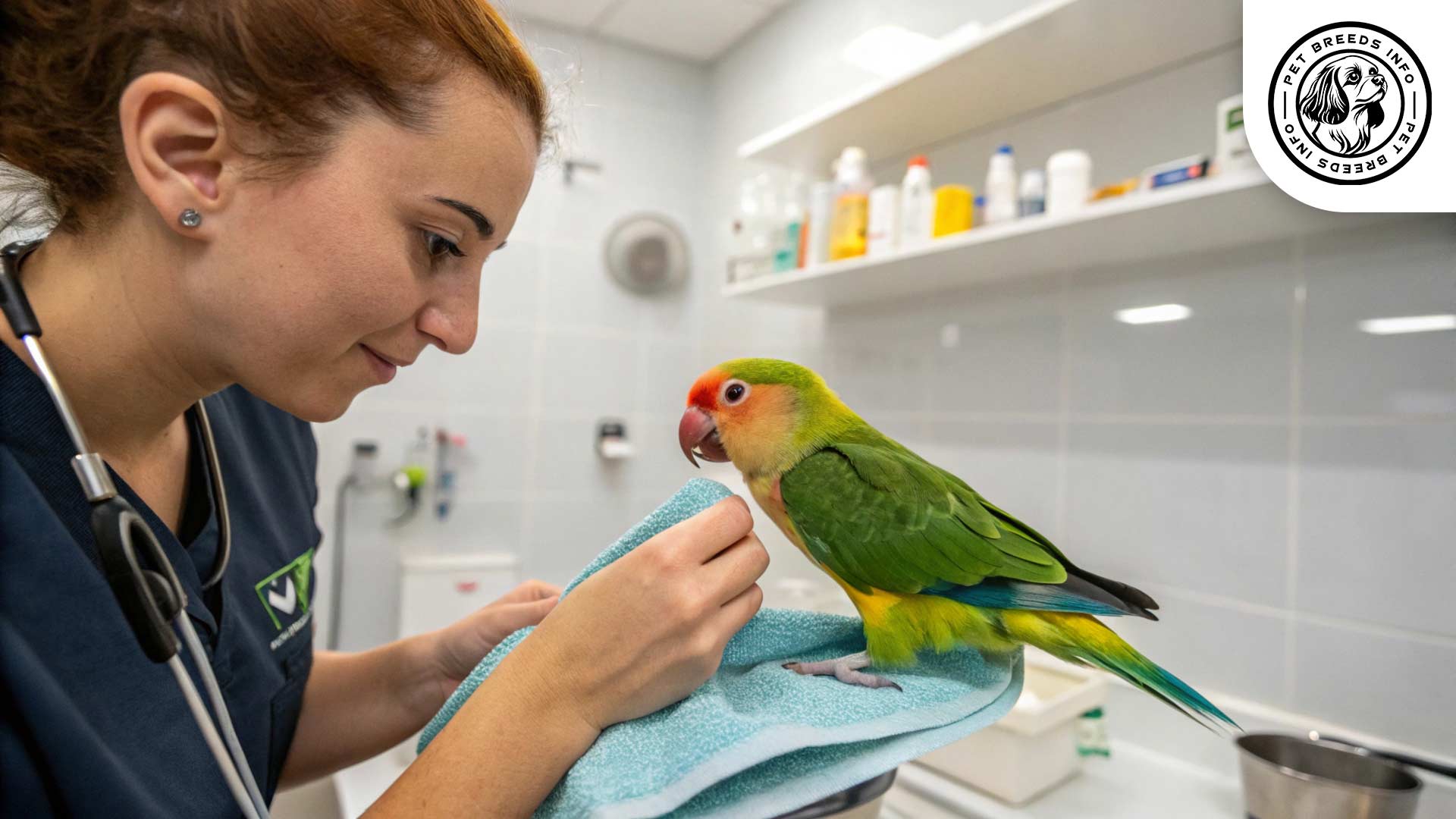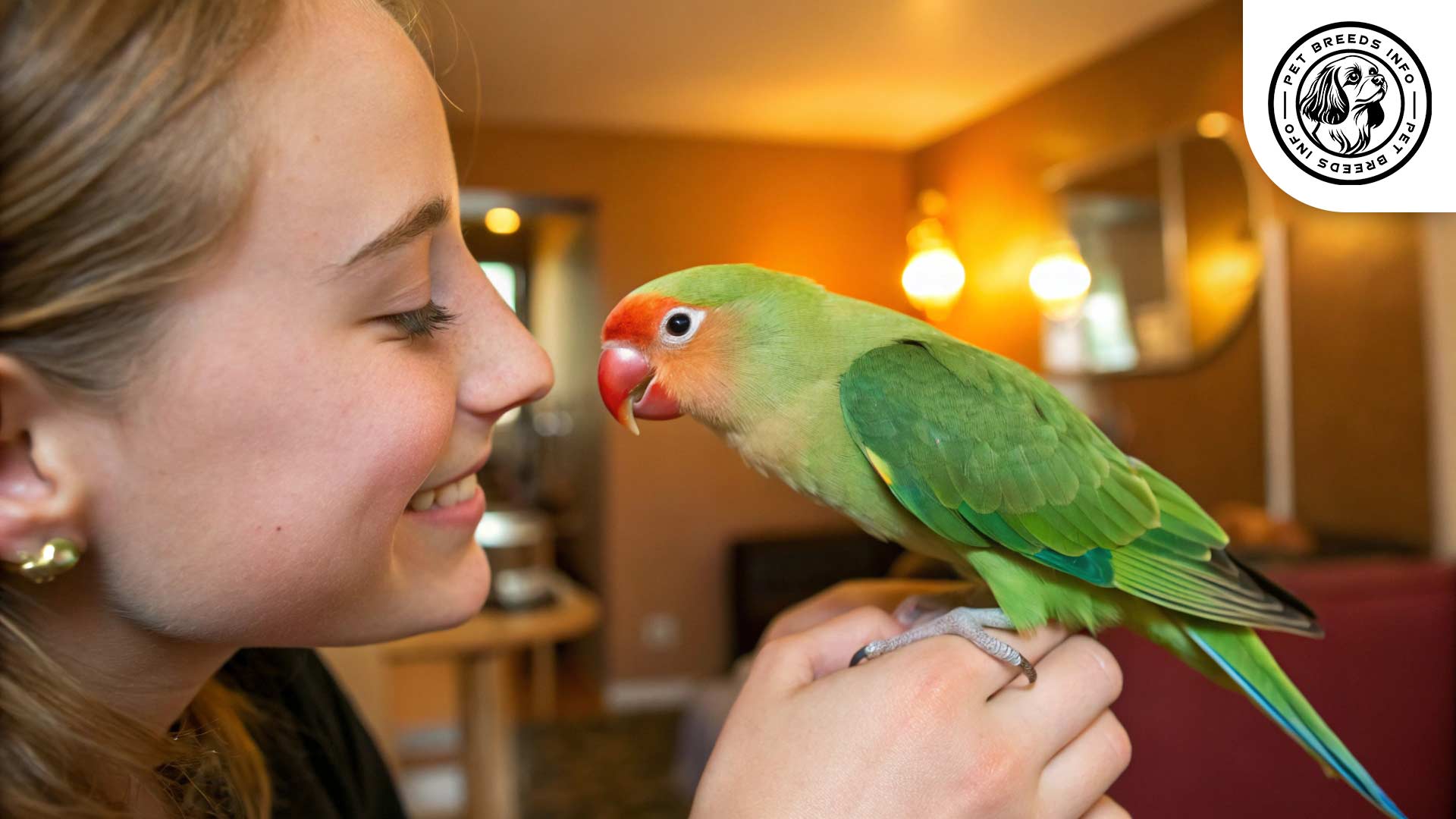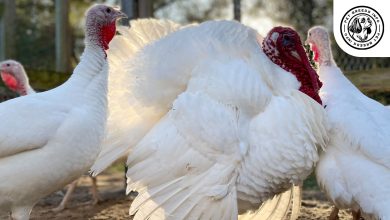Fischer’s Lovebird Bird: Personality, Lifespan, Food & Care
General Introduction of the Breed
Fischer’s Lovebird (Agapornis fischeri) is a small parrot species from the lovebird family. This colorful and energetic bird is named after German explorer Gustav Fischer, who discovered it in the late 19th century.
Native to East Africa, particularly in regions of Tanzania, Fischer’s Lovebirds thrive in dry savannas and grasslands. They have become popular pets worldwide due to their playful nature and strong bond with their owners.
Table of Contents
| Common Name | Fischer’s Lovebird |
| Scientific Name | Agapornis fischeri |
| Origin | East Africa (Tanzania) |
| Size | 5.5 in (14 cm); 42–58 g |
| Lifespan | 10–15 years |
| Primary Purpose | Companion pet |
| Temperament | Affectionate, playful, energetic |
| Cold-Hardy | No (sensitive to cold and heat extremes) |
Physical Characteristics
Fischer’s Lovebird is a small parrot, typically measuring around 14 cm (5.5 inches) in length and weighing between 42-58 grams.
Its plumage is vibrant, with a green body, an orange face, and a yellow-orange gradient on the chest and neck. The wings are primarily green with shades of blue on the rump and tail.
It has round, dark eyes with a white eye-ring, enhancing its expressive appearance. The beak is bright red, a distinguishing characteristic of this species.
The tail is short and slightly rounded, complementing its compact body shape.

Personality and Temperament
Fischer’s Lovebirds are highly intelligent and energetic birds, known for their curious and playful behavior.
They form strong emotional bonds with their owners and exhibit affectionate tendencies, often seeking human interaction.
These birds are social and enjoy the company of other lovebirds, making them better suited for keeping in pairs or small groups.
They are vocal birds, frequently chirping and engaging in playful antics. Their communication is expressive, though not as loud as larger parrots.
Due to their sensitivity to changes, they require consistent social interaction and a stable environment to thrive.
Read More: Timneh African Grey
Care and Maintenance Requirements
Fischer’s Lovebirds are active and require ample space for movement. A spacious cage with perches, toys, and climbing structures is ideal for keeping them engaged.
Supervised out-of-cage time is highly recommended to support their exercise needs.
They adapt well to different living environments, including apartments, but they thrive in areas with adequate ventilation and natural light.
Grooming includes regular nail trimming and optional beak maintenance if overgrowth occurs. Bathing is encouraged through shallow water dishes or misting to keep their feathers clean.
They may be sensitive to extreme cold or direct, prolonged exposure to sunlight, so temperature regulation is necessary.
Diet and Nutrition
A balanced diet for Fischer’s Lovebirds includes pellets, fresh fruits, and vegetables. Seeds can be given occasionally but should not be the main diet.
Leafy greens, carrots, apples, and berries are nutritious choices, while avocados, chocolate, caffeine, and onions should be strictly avoided as they are toxic to birds.
The portion size should be appropriate to prevent overeating while ensuring they receive enough essential nutrients.
Health and Common Medical Issues
Common health issues include respiratory infections, feather plucking, and nutritional deficiencies.
They can be prone to psittacosis (parrot fever) if hygiene conditions are poor. Regular cage cleaning and a healthy diet help in prevention.
Read More: Cinnamon Cockatiel
Fischer’s Lovebirds have an average lifespan of 10-15 years with proper care.
Routine vet check-ups, vaccinations, and parasite control are essential for maintaining their well-being.

Training and Behavior Management
These birds are intelligent and can learn basic tricks and commands with positive reinforcement.
Training should begin early to establish good behavior, and socialization with humans should occur consistently.
Methods such as treats, verbal praise, and gentle repetition work best for encouraging learning.
Establishing routines and clear interactions helps in managing undesirable behaviors such as biting or excessive chirping.
Interaction with Other Animals and Humans
Fischer’s Lovebirds are highly social and enjoy interacting with humans, especially when raised in a loving environment.
They are generally good with children but should be handled gently to prevent stress.
They co-exist well with other lovebirds but may display territorial behavior if housed with different bird species.
They require frequent human interaction, making them ideal for companionship rather than independent pets.

Price and Availability
The cost of purchasing a Fischer’s Lovebird varies between $50-$150, depending on age, color variation, and breeder reputation.
Potential owners should seek reputable breeders or adoption centers to ensure the health and ethical breeding of the bird.
Before purchasing, it is important to consider long-term care commitments, including diet, housing, and veterinary expenses.
Read More: Cotton Patch Goose
Conclusion and Final Thoughts
Fischer’s Lovebirds are affectionate, playful, and intelligent birds that make wonderful pets for dedicated owners.
They thrive in interactive environments where they receive attention and mental stimulation.
Due to their strong social nature, they are best suited for individuals or families willing to invest time in bonding with them.
Prospective owners should consider their long lifespan and social needs before choosing this breed.
FAQ
Do Fischer’s Lovebirds talk?
They aren’t known for talking but are expressive through chirps and body language.
Should they be kept in pairs?
Yes, they thrive in pairs or small groups due to their highly social nature.
Are they good for apartment living?
Absolutely! As long as they get enough space and interaction, they adapt well.
Can kids handle them?
Yes, with supervision—gentle handling is key due to their small size.
How long do they live?
With proper care, Fischer’s Lovebirds live between 10 to 15 years.





